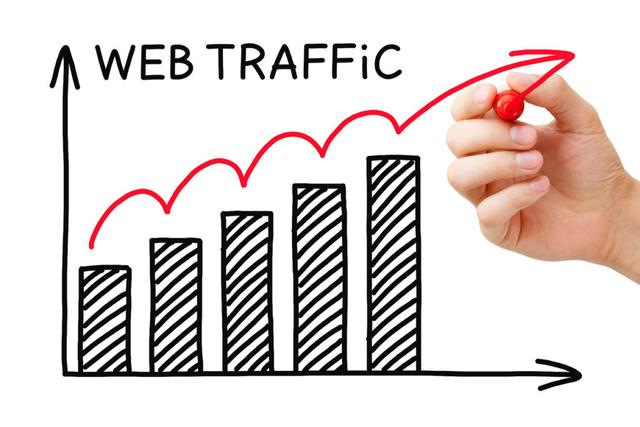If you’re a business owner, traffic isn’t just the dreadful stuff you sit in going to and from work. Website traffic can be a positive thing for your business. Understanding different kinds of online traffic is an important first step to optimizing your digital presence.
In this article we'll introduce you to the different traffic channels and give you a deep dive into the most popular two: Organic Traffic and Paid Traffic.
Website Traffic Channels
Organic traffic:
Organic traffic includes any traffic from visitors coming to your site from unpaid search engines (such as Google, Bing, Yahoo!, etc). Search engines will suggest your webpage to users based on:
- relevance to the search term
- user intent
- context
The more relevant your content is deemed, the better chance you have of earning organic traffic.
Paid traffic:
Paid traffic is tracked when users come to your website from paid search engine marketing. This traffic is generated by users clicking on an advertisement that your company has created.
Social traffic:
Any form of unpaid traffic from a social media network or social media platform (Facebook, Twitter, Instagram, etc) that lands on your site is considered social traffic. It’s important to track your organizations paid advertising which is running ads on social media because all the traffic (“organic” social media and “paid” social media) will be lumped into this metric.
Referral traffic:
Referral traffic consists of visits to your site that come from somewhere other than a search engine. Here are some common examples of referral traffic sources:
- guest blogs
- web directories
- partnering alliances
There are several ways to get links to your website, called backlinks, but we won't go into more detail in this blog post.
Email traffic:
Email traffic consists of visitors referred to your site from an email campaign link. It's important to note that email traffic will only be counted (as email traffic) when setup properly for tracking purposes; otherwise, it will be bucketed into direct traffic.
Direct traffic:
Direct traffic sessions occur any time that Google Analytics is unable to determine another referring source or channel. Here are some common examples of direct traffic:
- entering the URL directly into the web browser
- using a bookmark to directly access a site
Consumer Behaviors in the Digital Age
According to Status Labs, 90% of searchers haven’t made their mind up about a brand before starting their search (Source: https://www.hubspot.com/marketing-statistics). Buyers are most likely to find your business through a search engine. This drives the point that really understanding how to drive your target audience to your site through search engines is imperative.
Whether you’re a web-based entity or a brick and mortar business, increasing traffic to your site will be a key factor in scaling your business. When you drive quality traffic to your site, you increase the number of opportunities for a conversion to occur.
Understanding Organic Traffic
Search engines use sets of instructions (algorithms) to determine which pages and sites are most relevant to certain search queries. Each search engine is unique in its own way, but for the most part, they all have the same goal of providing users with the highest quality and relevance of content to their search term.
Search engines provide users with information in the form of a listing page called a search engine results page (SERP). On the SERP, results are listed in order of most relevant content first. When your website is shown on the SERP and gets clicked by users, they'll be directed to your site and are among those counted as organic traffic users.
How does Organic Traffic work?
Let’s take a look at a real-life example:
Scenario: You’re the owner of a dog walking service in Milwaukee, Wisconsin
Action: A Google user searches “dog walking services in Milwaukee”
Desired Result: Your business website is listed on the first page of Google for that search term. This results in users clicking on your company. These users are unique visitors to your site and are part of the organic traffic since they arrived on your site through the organic listings shown on the SERP.
Why is Organic Traffic Important?
Organic traffic is important because it gives you the ability to increase your brand's visibility without the need to pay for each visitor. For this reason organic traffic is more scalable. This is important because it is a "free" way to bring traffic to your site. While we all know "free" is never really free, the potential for ROI is much greater with organic traffic than any other traffic source.
Organic traffic can be particularly valuable since search engines attempt to connect users with the most relevant content from their search queries. This gives website owners the incentive to create and implement a content strategy focused around the relevance to user search intent.
Understanding Paid Traffic
A well-placed ad can make a significant difference for your company. Properly targeted ads can bring in traffic that you typically would not rank for and bring in a whole new set of customers.
No matter the type of paid search you are thinking of, doing your research and understanding your customer needs is key. When you are paying for traffic, you want high quality traffic with specific searches that are more likely to bring you qualified leads.
Paid ads are an excellent tool that can be utilized quickly to result in a noticeable boost in your sales. Keep in mind that this may not as scalable as organic traffic because each time someone clicks your ad, it’s coming directly out of your pocket. For this reason, it’s important to keep track and do reporting for your paid advertising to ensure you are getting a good ROI and that what you are doing makes sense.
Just like with organic traffic, it is important to understand your audience when doing paid search campaigns. You want to target specific groups of people that are likely to convert. Content strategy is just as important here as it is in organic traffic.
How does paid traffic work?
Let’s take a look at another real-life scenario:
Scenario: You’re the owner of a dog walking service in Milwaukee, Wisconsin and are actively running an ad campaign promoting your business.
Action: A Google user searches “dog walking services in Milwaukee”
Desired Result: Your business is shown on the first page of Google in the ads section above all the organic results. Users click on your ad and are directed to your site. Google charges you for these clicks and you're billed accordingly.
Why is Paid Traffic Important?
Paid ads play a large part in a well-rounded marketing campaign. Paid traffic can drastically and quickly increase your company's visibility since it can take your listing to the top of the SERP above the organic listings. This can occur without having to rank highly with a search engine's algorithms.
How to measure success in digital marketing
Understanding the impact each channel has on your business gives you the tools you need to balance your investment of time and money. When you understand the benefits and liabilities of each approach you’re in a better position to create a balance between your use of these different channels. Having more users results in increasing the possibility of success in the realm of digital marketing.
In the world of online marketing, success should be defined by you as the business owner. Many people attribute increased traffic to your website as a measure of success, but that number usually means nothing if those visit do not results in a sale or goal completion. As a business owner, your bottom-line is a major benchmark for your digital marketing success. How well you can track and measure relevant metrics and validate them through the sales actions of visitors on your site will establish that baseline.

